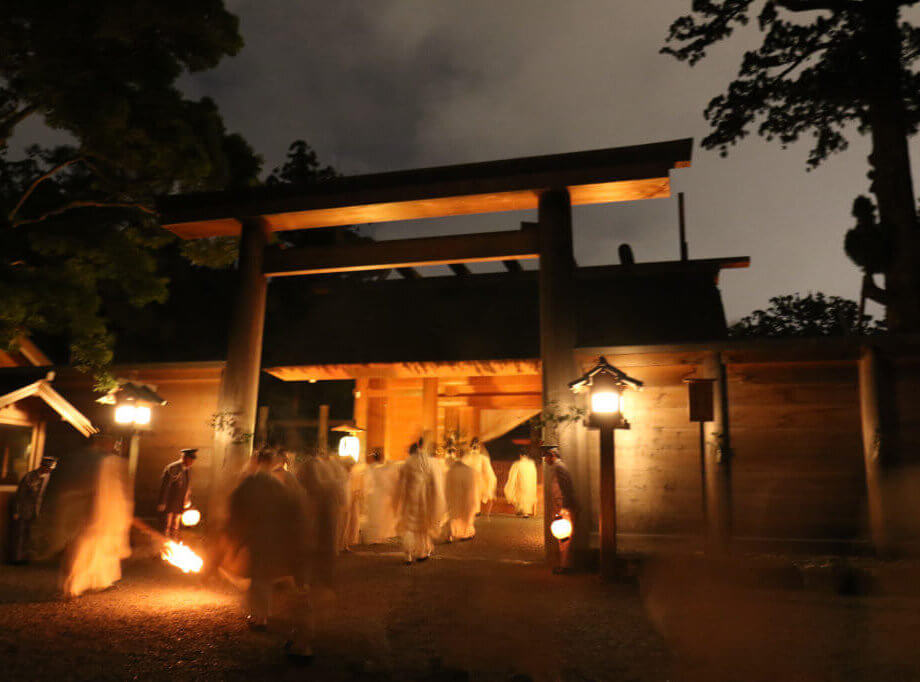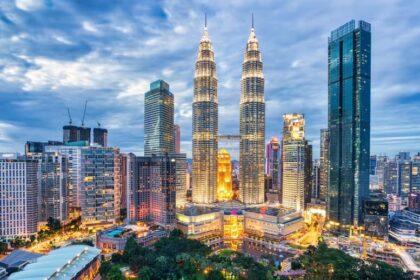The Sacred Renewal of Ise Jingu: A Tradition Spanning Centuries
Every twenty years, a remarkable event unfolds in Ise, Mie Prefecture, Japan. The Ise Jingu shrine complex, considered the spiritual heart of Shintoism, undergoes a complete renewal through a ceremony known as Shikinen Sengu. This tradition, which has continued unbroken for over 1,300 years, involves the reconstruction of the shrine’s main buildings and the renewal of its sacred treasures. The recent ceremonial procession of sacred logs marks the beginning of preparations for the next Shikinen Sengu, scheduled for 2033.
- The Sacred Renewal of Ise Jingu: A Tradition Spanning Centuries
- What Is Shikinen Sengu? Understanding the Ritual of Renewal
- The Journey of the Sacred Logs: From Forest to Shrine
- Why Rebuild Every 20 Years? The Philosophy Behind Shikinen Sengu
- Community Involvement: A Festival of Unity and Tradition
- The Architecture and Spiritual Significance of Ise Jingu
- Environmental Stewardship and Sustainable Forestry
- Preserving Intangible Cultural Heritage
- The Broader Impact: National Identity and Global Recognition
- In Summary
The ritual is not only a feat of religious devotion but also a living testament to Japan’s commitment to cultural preservation, community involvement, and harmony with nature. The journey of the sacred logs, from their felling in distant forests to their arrival at the shrine, is a story rich in symbolism, craftsmanship, and communal spirit.
What Is Shikinen Sengu? Understanding the Ritual of Renewal
Shikinen Sengu is a unique Shinto ceremony in which the main shrine buildings and sacred treasures of Ise Jingu are rebuilt every twenty years. The process involves meticulous planning, traditional craftsmanship, and a series of elaborate rituals that span nearly a decade. The tradition is rooted in the belief that periodic renewal maintains the purity of the sacred space, ensures the transmission of ancient skills, and symbolizes the eternal youth of the deities enshrined at Ise Jingu.
The origins of Shikinen Sengu date back to the late 7th century, during the reign of Emperor Tenmu. The practice was established to ensure that the sacred structures, built from natural materials like Japanese cypress, would not succumb to decay. Instead of attempting to preserve the original buildings indefinitely, the Shinto approach embraces impermanence and renewal, reflecting a deep respect for the cycles of nature.
As explained by the Japan for Sustainability organization, the underlying concept is that “repeated rebuilding renders sanctuaries eternal.” This philosophy stands in contrast to Western traditions of constructing monuments from stone or concrete to withstand the passage of time. At Ise Jingu, it is the act of renewal itself that preserves the shrine’s sanctity and cultural significance.
The Journey of the Sacred Logs: From Forest to Shrine
The recent ceremonies in June 2024 marked a significant milestone in the lead-up to the 2033 Shikinen Sengu. Sacred logs, destined to become the pillars and beams of the new shrine buildings, were ceremonially transported from forests in Nagano and Gifu prefectures to the Ise Jingu complex. The journey of these logs is a carefully orchestrated event, steeped in ritual and community participation.
The process began with the ceremonial cutting of the logs in Agematsu, Nagano Prefecture, on June 3. The logs, each measuring over six meters in length and weighing approximately 1.5 metric tons, were then transported by truck, adorned with red and white curtains, to the city of Ise. Upon arrival, the logs underwent a purification ritual conducted by shrine priests, emphasizing the sacred nature of the materials.
The next stage involved a grand procession through the city. Hundreds of local residents, students, and shrine staff donned traditional attire—black-dyed coats and hinoki cypress hats—and pulled the logs on wooden carts or river sleds. The procession was accompanied by the rhythmic chants of “Enya, enya!” and the singing of the Ise Ondo, a traditional folk song. Spectators lined the streets, offering encouragement and participating in the communal celebration.
On Monday, the logs for the Naiku (Inner Shrine) were brought in by river, with participants hauling the massive cypress trunks upstream along the Isuzu River. On Tuesday, another set of logs for the Geku (Outer Shrine) was pulled through the streets of Ise, covering a distance of about two kilometers. Upon reaching the shrine precincts, the logs were welcomed by Chief Priest Asataka Kuni and placed in the Gojoden house after a final purification ritual.
Why Rebuild Every 20 Years? The Philosophy Behind Shikinen Sengu
The decision to rebuild the shrine every twenty years is deeply rooted in both practical and spiritual considerations. Japanese cypress, the primary material used in the shrine’s construction, is susceptible to decay over time, especially in Japan’s humid climate. By reconstructing the buildings at regular intervals, the shrine maintains its structural integrity and aesthetic purity.
However, the ritual goes far beyond mere maintenance. Shikinen Sengu serves as a powerful symbol of renewal, impermanence, and the cyclical nature of life. It embodies the Shinto belief in the interconnectedness of humanity, nature, and the divine. The act of rebuilding is seen as a way to purify the sacred space, honor the deities, and express gratitude for the blessings of nature.
Moreover, the ceremony plays a crucial role in preserving traditional craftsmanship. The rebuilding process requires the expertise of highly skilled carpenters, artisans, and craftsmen, who use ancient techniques passed down through generations. By involving new apprentices in each cycle, Shikinen Sengu ensures that these invaluable skills are not lost to time.
Community Involvement: A Festival of Unity and Tradition
One of the most remarkable aspects of Shikinen Sengu is the active participation of the local community. The transportation of the sacred logs, known as Okihiki, is a festive event that brings together people of all ages. Residents, students, and even children join in pulling the heavy carts, singing work songs, and sharing in the collective effort.
Along the route, neighborhood associations provide refreshments and entertainment, turning the procession into a lively celebration. The event fosters a sense of belonging, solidarity, and pride among participants. As noted by Junko Edahiro of Japan for Sustainability, the processions are “full of laughter” and serve as a “device to preserve the foundations of traditions that contribute to happiness in people’s lives.”
These communal rituals also serve an educational purpose, introducing younger generations to the values and customs of their ancestors. Elderly participants often pass on their knowledge and responsibilities to the youth, ensuring the continuity of the tradition. As one local remarked, “I will leave these duties to you next time,” highlighting the intergenerational transmission of cultural heritage.
The Architecture and Spiritual Significance of Ise Jingu
Ise Jingu is composed of two main shrines: Naiku (Inner Shrine), dedicated to Amaterasu-Omikami, the sun goddess and mythological ancestor of Japan’s imperial family; and Geku (Outer Shrine), dedicated to Toyouke-Omikami, the deity of agriculture, food, and industry. The complex includes 125 smaller shrines scattered across the lush forests of Ise, symbolizing the harmony between nature and spirituality.
The shrine buildings are constructed in the Yuiitsu-Shinmei-zukuri style, characterized by thatched roofs, minimal ornamentation, and elevated structures. This architectural style reflects Shinto principles of simplicity, purity, and naturalism. The use of natural materials and traditional techniques underscores the shrine’s connection to the environment and the divine.
Central to the spiritual significance of Ise Jingu is the concept of purity. Visitors participate in purification rituals before approaching the main shrine, and the act of rebuilding itself is seen as a form of spiritual cleansing. The transfer of the deity’s spirit from the old shrine to the new one is a solemn and sacred moment, reaffirming the shrine’s role as a living center of faith.
Environmental Stewardship and Sustainable Forestry
The Shikinen Sengu ceremony also highlights Japan’s approach to environmental stewardship. The vast quantities of Japanese cypress required for each rebuilding cycle—up to 10,000 trees—are sourced from carefully managed forests. Ise Jingu owns a large tract of forest land, known as Misoma-yama, which has been cultivated over centuries to provide a sustainable supply of timber.
In addition to shrine-owned forests, timber is also procured from national forests in Nagano and Gifu prefectures. The process of selecting, felling, and curing the logs is meticulous, with logs being soaked in ponds for two years and then air-dried to ensure their strength and durability. This long-term approach to forestry reflects a deep respect for nature and a commitment to sustainability.
After the new shrine buildings are completed, materials from the old structures are not wasted. Large pillars are repurposed for torii gates, while other components are distributed to shrines across Japan for their own renovations. This practice of reusing materials strengthens the bonds between Ise Jingu and other Shinto shrines, fostering a sense of unity within the broader religious community.
Preserving Intangible Cultural Heritage
Shikinen Sengu is recognized as an essential part of Japan’s intangible cultural heritage. The ceremony not only preserves architectural and craftsmanship skills but also reinforces the values of community, continuity, and reverence for nature. The rituals, songs, and festivals associated with the event deepen social bonds and provide a sense of identity and belonging.
Despite its profound cultural significance, Ise Jingu is not registered as a UNESCO World Heritage site. The reason lies in the very nature of the Shikinen Sengu tradition: the periodic reconstruction of the buildings means that the site does not meet the criteria for historical structures that remain unchanged. Nevertheless, the living tradition of renewal is what makes Ise Jingu unique and enduring.
The Broader Impact: National Identity and Global Recognition
Ise Jingu occupies a central place in Japan’s national identity. It is a site of pilgrimage for millions of Japanese, who come to pay their respects, seek blessings, and participate in the rituals. The shrine’s connection to the imperial family and its role in national ceremonies underscore its importance as a symbol of continuity and tradition.
The Shikinen Sengu ceremony attracts attention from around the world, drawing visitors, scholars, and cultural enthusiasts eager to witness the spectacle of renewal. The event serves as a reminder of the enduring power of tradition in a rapidly changing world, and the ways in which communities can come together to preserve their heritage.
As one visitor from Hiroshima Prefecture observed during the recent log procession, “It is amazing that the tradition has continued for 1,300 years.” Another local spectator expressed hope that the ceremony would continue for future generations, so that “my grandchildren could see it.” These sentiments reflect the deep sense of pride and responsibility felt by those who participate in and witness the Shikinen Sengu.
In Summary
- Ise Jingu’s Shikinen Sengu is a 1,300-year-old tradition of rebuilding the shrine every twenty years, symbolizing renewal and continuity.
- The recent ceremonial transport of sacred logs marks the start of preparations for the 2033 renewal.
- The ritual involves extensive community participation, traditional craftsmanship, and elaborate purification ceremonies.
- Shikinen Sengu preserves ancient skills, fosters environmental stewardship, and strengthens social bonds.
- The tradition embodies Shinto values of purity, harmony with nature, and reverence for the divine.
- Despite not being a World Heritage site, Ise Jingu is a cornerstone of Japanese cultural and spiritual identity, attracting millions of pilgrims and visitors.
- The ceremony’s enduring appeal lies in its ability to unite generations and communities in a shared celebration of heritage and faith.












